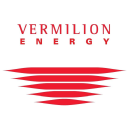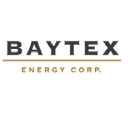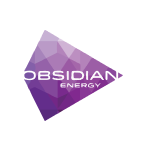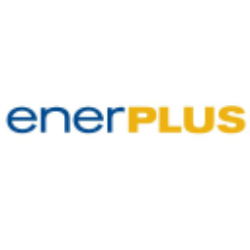VET

Vermilion Energy Inc.
VET
(2.8)10,13 USD
-13.36% ROA
-28.37% ROE
-2.67x PER
2.172.671.958,60 USD
32.34% DER
3.36% Yield
-42.01% NPM
Vermilion Energy Inc. Stock Analysis
Vermilion Energy Inc. Fundamental Analysis
Fundamental analysis in stock investing is like studying the foundation of a house before buying it. It involves looking at a company's financial health, like its earnings, assets, and debts, to determine if it's a good investment based on its fundamental strength and potential for growth.
| # | Analysis | Rating |
|---|---|---|
| 1 |
ROE
The stock's ROE exceeds expectations (33.82%), revealing strong profitability and efficient use of shareholders' equity, making it an attractive investment opportunity. |
|
| 2 |
ROA
This stock has a great ability to make a lot of money from the things it owns, which makes it a really good investment for smart investors. |
|
| 3 |
PBV
The stock's low PBV ratio (0.78x) suggests it's undervalued, making it an attractive opportunity for investors. |
|
| 4 |
DER
The stock has a low debt to equity ratio (25%), which means it has a small amount of debt compared to the ownership it holds |
|
| 5 |
Assets Growth
With a track record of continuous revenue growth in the last three years, this company offers a promising investment opportunity |
|
| 6 |
Graham Number
The Graham number analysis indicates that this company's stock price is likely undervalued, raising prospects for a favorable investment opportunity. |
|
| 7 |
Dividend Growth
Investors can take confidence in the company's impressive track record of annual dividend growth over the last three years, showcasing a commitment to providing higher returns. |
|
| 8 |
Revenue Growth
Regrettably, this company's revenue has shown no signs of growth over the past three years, suggesting limited potential for returns and making it a less appealing choice. |
|
| 9 |
Net Profit Growth
This company's net profit has remained stagnant over the past five years, indicating a lack of growth and making it a less favorable investment option. |
|
| 10 |
Dividend
The company's decision to withhold dividends for three years raises questions about its ability to generate consistent returns. |
|
| 11 |
Buffet Intrinsic Value
Warren Buffett's formula suggests that the company's stock is overpriced (-530), presenting a possible disadvantage for investors as its market price surpasses its estimated intrinsic value. |
Vermilion Energy Inc. Technical Analysis
Technical analysis in stock investing is like reading the patterns on a weather map to predict future weather conditions. It involves studying past stock price movements and trading volumes to make predictions about where a stock's price might go next, without necessarily looking at the company's financial health.
| # | Analysis | Recommendation |
|---|---|---|
| 1 | Awesome Oscillator | Buy |
| 2 | MACD | Sell |
| 3 | RSI | Hold |
| 4 | Stoch RSI | Sell |
Vermilion Energy Inc. Price Chart
Financial Statements
Financial statements are like report cards for companies. They show how much money a company makes (income statement), what it owns and owes (balance sheet), and where it spends its money (cash flow statement), helping stock investors understand if a company is healthy and worth investing in.
Income Statements
An income statement for a company is like a scoreboard for its profits and losses. It shows how much money the company made (revenue) and how much it spent to make that money (expenses), helping stock investors see if a company is making a profit or not.
Revenue in stock investing is the total amount of money a company earns from its sales, and it's a key factor that investors consider to assess a company's financial performance and growth potential.
| Year | Revenue | Growth |
|---|---|---|
| 1995 | 2.100.000 | |
| 1996 | 9.300.000 | 77.42% |
| 1997 | 53.700.000 | 82.68% |
| 1998 | 55.700.000 | 3.59% |
| 1999 | 108.400.000 | 48.62% |
| 2000 | 234.653.000 | 53.8% |
| 2001 | 274.899.000 | 14.64% |
| 2002 | 287.540.000 | 4.4% |
| 2003 | 315.572.000 | 8.88% |
| 2004 | 354.525.000 | 10.99% |
| 2005 | 529.938.000 | 33.1% |
| 2006 | 618.072.000 | 14.26% |
| 2007 | 707.334.000 | 12.62% |
| 2008 | 1.001.905.000 | 29.4% |
| 2009 | 639.751.000 | -56.61% |
| 2010 | 727.805.000 | 12.1% |
| 2011 | 1.031.570.000 | 29.45% |
| 2012 | 1.083.103.000 | 4.76% |
| 2013 | 1.273.835.000 | 14.97% |
| 2014 | 1.419.628.000 | 10.27% |
| 2015 | 939.586.000 | -51.09% |
| 2016 | 882.791.000 | -6.43% |
| 2017 | 1.098.838.000 | 19.66% |
| 2018 | 1.678.117.000 | 34.52% |
| 2019 | 1.911.137.000 | 12.19% |
| 2020 | 1.247.398.000 | -53.21% |
| 2021 | 2.226.852.000 | 43.98% |
| 2022 | 3.721.228.000 | 40.16% |
| 2023 | 2.107.136.000 | -76.6% |
| 2023 | 2.199.555.000 | 4.2% |
| 2024 | 1.843.864.000 | -19.29% |
Research and Development Expenses are the costs a company incurs to create and improve its products or services, which can be important for investors to evaluate a company's innovation and potential for future growth.
| Year | Research and Development Expenses | Growth |
|---|---|---|
| 1995 | 0 | |
| 1996 | 0 | 0% |
| 1997 | 0 | 0% |
| 1998 | 0 | 0% |
| 1999 | 0 | 0% |
| 2000 | 0 | 0% |
| 2001 | 0 | 0% |
| 2002 | 0 | 0% |
| 2003 | 0 | 0% |
| 2004 | 0 | 0% |
| 2005 | 0 | 0% |
| 2006 | 0 | 0% |
| 2007 | 0 | 0% |
| 2008 | 0 | 0% |
| 2009 | 0 | 0% |
| 2010 | 0 | 0% |
| 2011 | 0 | 0% |
| 2012 | 0 | 0% |
| 2013 | 0 | 0% |
| 2014 | 0 | 0% |
| 2015 | 0 | 0% |
| 2016 | 0 | 0% |
| 2017 | 0 | 0% |
| 2018 | 0 | 0% |
| 2019 | 0 | 0% |
| 2020 | 0 | 0% |
| 2021 | 0 | 0% |
| 2022 | 0 | 0% |
| 2023 | 0 | 0% |
| 2023 | 0 | 0% |
| 2024 | 0 | 0% |
General and Administrative Expenses are the costs a company incurs to run its day-to-day operations, such as office rent, salaries, and utilities, which investors consider to understand a company's overall efficiency and management effectiveness.
| Year | General and Administrative Expenses | Growth |
|---|---|---|
| 1995 | 0 | |
| 1996 | 0 | 0% |
| 1997 | 0 | 0% |
| 1998 | 0 | 0% |
| 1999 | 0 | 0% |
| 2000 | 0 | 0% |
| 2001 | 0 | 0% |
| 2002 | 0 | 0% |
| 2003 | 0 | 0% |
| 2004 | 0 | 0% |
| 2005 | 0 | 0% |
| 2006 | 0 | 0% |
| 2007 | 0 | 0% |
| 2008 | 0 | 0% |
| 2009 | 49.388.000 | 100% |
| 2010 | 71.012.000 | 30.45% |
| 2011 | 83.250.000 | 14.7% |
| 2012 | 114.990.000 | 27.6% |
| 2013 | 139.679.000 | 17.68% |
| 2014 | 171.890.000 | 18.74% |
| 2015 | 170.476.000 | -0.83% |
| 2016 | 161.575.000 | -5.51% |
| 2017 | 159.400.000 | -1.36% |
| 2018 | 164.562.000 | 3.14% |
| 2019 | 195.655.000 | 15.89% |
| 2020 | 171.457.000 | -14.11% |
| 2021 | 171.603.000 | 0.09% |
| 2022 | 102.067.000 | -68.13% |
| 2023 | 109.284.000 | 6.6% |
| 2023 | 80.716.000 | -35.39% |
| 2024 | 148.152.000 | 45.52% |
EBITDA stands for Earnings Before Interest, Taxes, Depreciation, and Amortization. It is a measure that helps stock investors analyze a company's profitability by looking at its earnings without considering certain expenses. This helps to get a clearer picture of the company's financial performance and its ability to generate cash flow.
| Year | EBITDA | Growth |
|---|---|---|
| 1995 | 1.300.000 | |
| 1996 | 7.100.000 | 81.69% |
| 1997 | 36.300.000 | 80.44% |
| 1998 | 31.900.000 | -13.79% |
| 1999 | 83.300.000 | 61.7% |
| 2000 | 202.835.000 | 58.93% |
| 2001 | 234.539.000 | 13.52% |
| 2002 | 235.034.000 | 0.21% |
| 2003 | 249.977.000 | 5.98% |
| 2004 | 285.042.000 | 12.3% |
| 2005 | 337.422.000 | 15.52% |
| 2006 | 378.642.000 | 10.89% |
| 2007 | 434.662.000 | 12.89% |
| 2008 | 660.769.000 | 34.22% |
| 2009 | 386.627.000 | -70.91% |
| 2010 | 353.032.000 | -9.52% |
| 2011 | 684.273.000 | 48.41% |
| 2012 | 705.796.000 | 3.05% |
| 2013 | 941.746.000 | 25.05% |
| 2014 | 928.421.000 | -1.44% |
| 2015 | 304.695.000 | -204.71% |
| 2016 | 361.731.000 | 15.77% |
| 2017 | 626.354.000 | 42.25% |
| 2018 | 1.036.513.000 | 39.57% |
| 2019 | 917.256.000 | -13% |
| 2020 | 392.223.000 | -133.86% |
| 2021 | 1.286.893.000 | 69.52% |
| 2022 | 2.453.359.000 | 47.55% |
| 2023 | 964.272.000 | -154.43% |
| 2023 | 519.549.000 | -85.6% |
| 2024 | 918.920.000 | 43.46% |
Gross profit is the money a company makes from selling its products or services after subtracting the cost of producing or providing them, and it is an important measure for investors to understand a company's profitability.
| Year | Gross Profit | Growth |
|---|---|---|
| 1995 | 1.600.000 | |
| 1996 | 7.800.000 | 79.49% |
| 1997 | 39.600.000 | 80.3% |
| 1998 | 36.400.000 | -8.79% |
| 1999 | 88.400.000 | 58.82% |
| 2000 | 209.452.000 | 57.79% |
| 2001 | 241.686.000 | 13.34% |
| 2002 | 244.564.000 | 1.18% |
| 2003 | 262.079.000 | 6.68% |
| 2004 | 288.743.000 | 9.23% |
| 2005 | 359.945.000 | 19.78% |
| 2006 | 418.864.000 | 14.07% |
| 2007 | 467.373.000 | 10.38% |
| 2008 | 727.539.000 | 35.76% |
| 2009 | 383.574.000 | -89.67% |
| 2010 | 473.003.000 | 18.91% |
| 2011 | 789.412.000 | 40.08% |
| 2012 | 735.076.000 | -7.39% |
| 2013 | 883.513.000 | 16.8% |
| 2014 | 885.934.000 | 0.27% |
| 2015 | 414.908.000 | -113.53% |
| 2016 | 300.505.000 | -38.07% |
| 2017 | 532.679.000 | 43.59% |
| 2018 | 916.894.000 | 41.9% |
| 2019 | 851.020.000 | -7.74% |
| 2020 | 432.530.000 | -96.75% |
| 2021 | 1.321.951.000 | 67.28% |
| 2022 | 2.593.243.000 | 49.02% |
| 2023 | 1.168.944.000 | -121.84% |
| 2023 | 1.118.242.000 | -4.53% |
| 2024 | 349.500.000 | -219.95% |
Net income in stock investing is like the money a company actually gets to keep as profit after paying all its bills, and it's an important measure to understand how well a company is doing financially.
| Year | Net Profit | Growth |
|---|---|---|
| 1995 | 200.000 | |
| 1996 | 1.900.000 | 89.47% |
| 1997 | 11.400.000 | 83.33% |
| 1998 | 3.400.000 | -235.29% |
| 1999 | 20.000.000 | 83% |
| 2000 | 61.449.000 | 67.45% |
| 2001 | 65.743.000 | 6.53% |
| 2002 | 41.322.000 | -59.1% |
| 2003 | 56.742.000 | 27.18% |
| 2004 | 113.700.000 | 50.09% |
| 2005 | 158.471.000 | 28.25% |
| 2006 | 146.923.000 | -7.86% |
| 2007 | 164.286.000 | 10.57% |
| 2008 | 229.189.000 | 28.32% |
| 2009 | 185.498.000 | -23.55% |
| 2010 | 111.263.000 | -66.72% |
| 2011 | 142.821.000 | 22.1% |
| 2012 | 190.622.000 | 25.08% |
| 2013 | 327.641.000 | 41.82% |
| 2014 | 269.326.000 | -21.65% |
| 2015 | -217.302.000 | 223.94% |
| 2016 | -160.051.000 | -35.77% |
| 2017 | 62.258.000 | 357.08% |
| 2018 | 271.650.000 | 77.08% |
| 2019 | 32.799.000 | -728.23% |
| 2020 | -1.517.427.000 | 102.16% |
| 2021 | 1.148.696.000 | 232.1% |
| 2022 | 1.313.062.000 | 12.52% |
| 2023 | 229.236.000 | -472.8% |
| 2023 | -237.587.000 | 196.49% |
| 2024 | -329.700.000 | 27.94% |
EPS, or earnings per share, is a measure that shows how much profit a company has earned for each outstanding share of its stock, and it is important for stock investors as it helps understand the profitability of a company and compare it with other companies in the market.
| Year | Earning per Share (EPS) | Growth |
|---|---|---|
| 1995 | 0 | |
| 1996 | 0 | 0% |
| 1997 | 0 | 0% |
| 1998 | 0 | 0% |
| 1999 | 0 | 0% |
| 2000 | 1 | 100% |
| 2001 | 1 | 0% |
| 2002 | 1 | 0% |
| 2003 | 1 | 0% |
| 2004 | 2 | 100% |
| 2005 | 3 | 0% |
| 2006 | 2 | 0% |
| 2007 | 2 | 0% |
| 2008 | 3 | 33.33% |
| 2009 | 3 | -50% |
| 2010 | 1 | 0% |
| 2011 | 2 | 100% |
| 2012 | 2 | 0% |
| 2013 | 3 | 66.67% |
| 2014 | 3 | -50% |
| 2015 | -2 | 300% |
| 2016 | -1 | 0% |
| 2017 | 1 | 0% |
| 2018 | 2 | 100% |
| 2019 | 0 | 0% |
| 2020 | -10 | 100% |
| 2021 | 7 | 228.57% |
| 2022 | 8 | 12.5% |
| 2023 | 1 | -700% |
| 2023 | -1 | 200% |
| 2024 | -2 | 50% |
Cashflow Statements
Cashflow statements show the movement of money in and out of a company, helping stock investors understand how much money a company makes and spends. By examining cashflow statements, investors can assess if a company is generating enough cash to pay its bills, invest in growth, and provide returns to stockholders.
Free cash flow is the leftover cash that a company generates after covering its operating expenses and capital expenditures, which is important for stock investors as it shows how much money a company has available to invest in growth, pay dividends, or reduce debt.
| Year | Free Cashflow | Growth |
|---|---|---|
| 1995 | -4.800.000 | |
| 1996 | -7.600.000 | 36.84% |
| 1997 | -14.000.000 | 45.71% |
| 1998 | -121.000.000 | 88.43% |
| 1999 | -5.000.000 | -2320% |
| 2000 | 114.742.000 | 104.36% |
| 2001 | 154.192.000 | 25.58% |
| 2002 | 121.212.000 | -27.21% |
| 2003 | 164.039.000 | 26.11% |
| 2004 | 51.133.000 | -220.81% |
| 2005 | 41.268.000 | -23.9% |
| 2006 | 142.659.000 | 71.07% |
| 2007 | 52.957.000 | -169.39% |
| 2008 | 426.833.000 | 87.59% |
| 2009 | -123.886.000 | 444.54% |
| 2010 | -17.555.000 | -605.7% |
| 2011 | 316.661.000 | 105.54% |
| 2012 | -62.142.000 | 609.58% |
| 2013 | 144.483.000 | 143.01% |
| 2014 | -116.464.000 | 224.06% |
| 2015 | -71.350.000 | -63.23% |
| 2016 | 168.608.000 | 142.32% |
| 2017 | 245.810.000 | 31.41% |
| 2018 | 21.489.000 | -1043.89% |
| 2019 | 300.301.000 | 92.84% |
| 2020 | 132.950.000 | -125.88% |
| 2021 | 459.657.000 | 71.08% |
| 2022 | 1.262.403.000 | 63.59% |
| 2023 | 434.337.000 | -190.65% |
| 2023 | -10.394.000 | 4278.73% |
| 2024 | 156.091.000 | 106.66% |
Operating cash flow represents the cash generated or consumed by a company's day-to-day operations, excluding external investing or financing activities, and is crucial for stock investors as it shows how much cash a company is generating from its core business operations.
| Year | Operating Cashflow | Growth |
|---|---|---|
| 1995 | 1.500.000 | |
| 1996 | 4.600.000 | 67.39% |
| 1997 | 32.000.000 | 85.63% |
| 1998 | 28.800.000 | -11.11% |
| 1999 | 41.300.000 | 30.27% |
| 2000 | 151.521.000 | 72.74% |
| 2001 | 156.386.000 | 3.11% |
| 2002 | 144.645.000 | -8.12% |
| 2003 | 164.039.000 | 11.82% |
| 2004 | 191.377.000 | 14.28% |
| 2005 | 245.116.000 | 21.92% |
| 2006 | 306.033.000 | 19.91% |
| 2007 | 349.890.000 | 12.53% |
| 2008 | 660.135.000 | 47% |
| 2009 | 230.316.000 | -186.62% |
| 2010 | 421.282.000 | 45.33% |
| 2011 | 447.092.000 | 5.77% |
| 2012 | 496.580.000 | 9.97% |
| 2013 | 705.025.000 | 29.57% |
| 2014 | 791.986.000 | 10.98% |
| 2015 | 444.408.000 | -78.21% |
| 2016 | 509.540.000 | 12.78% |
| 2017 | 593.896.000 | 14.2% |
| 2018 | 816.011.000 | 27.22% |
| 2019 | 823.465.000 | 0.91% |
| 2020 | 500.152.000 | -64.64% |
| 2021 | 834.453.000 | 40.06% |
| 2022 | 1.814.220.000 | 54% |
| 2023 | 1.024.528.000 | -77.08% |
| 2023 | 118.436.000 | -765.05% |
| 2024 | 266.322.000 | 55.53% |
Capex, short for capital expenditures, refers to the money a company spends on acquiring or upgrading tangible assets like buildings, equipment, or technology, which is important for stock investors as it indicates how much a company is investing in its infrastructure to support future growth and profitability.
| Year | Capital Expenditure | Growth |
|---|---|---|
| 1995 | 6.300.000 | |
| 1996 | 12.200.000 | 48.36% |
| 1997 | 46.000.000 | 73.48% |
| 1998 | 149.800.000 | 69.29% |
| 1999 | 46.300.000 | -223.54% |
| 2000 | 36.779.000 | -25.89% |
| 2001 | 2.194.000 | -1576.34% |
| 2002 | 23.433.000 | 90.64% |
| 2003 | 0 | 0% |
| 2004 | 140.244.000 | 100% |
| 2005 | 203.848.000 | 31.2% |
| 2006 | 163.374.000 | -24.77% |
| 2007 | 296.933.000 | 44.98% |
| 2008 | 233.302.000 | -27.27% |
| 2009 | 354.202.000 | 34.13% |
| 2010 | 438.837.000 | 19.29% |
| 2011 | 130.431.000 | -236.45% |
| 2012 | 558.722.000 | 76.66% |
| 2013 | 560.542.000 | 0.32% |
| 2014 | 908.450.000 | 38.3% |
| 2015 | 515.758.000 | -76.14% |
| 2016 | 340.932.000 | -51.28% |
| 2017 | 348.086.000 | 2.06% |
| 2018 | 794.522.000 | 56.19% |
| 2019 | 523.164.000 | -51.87% |
| 2020 | 367.202.000 | -42.47% |
| 2021 | 374.796.000 | 2.03% |
| 2022 | 551.817.000 | 32.08% |
| 2023 | 590.191.000 | 6.5% |
| 2023 | 128.830.000 | -358.12% |
| 2024 | 110.231.000 | -16.87% |
Balance Sheet
Balance sheets provide a snapshot of a company's financial health and its assets (such as cash, inventory, and property) and liabilities (like debts and obligations) at a specific point in time. For stock investors, balance sheets help assess the company's overall worth and evaluate its ability to meet financial obligations and support future growth.
Equity refers to the ownership interest or stake that shareholders have in a company, representing their claim on its assets and earnings after all debts and liabilities are paid.
| Year | Equity | Growth |
|---|---|---|
| 1995 | 5.400.000 | |
| 1996 | 21.300.000 | 74.65% |
| 1997 | 77.700.000 | 72.59% |
| 1998 | 123.800.000 | 37.24% |
| 1999 | 149.100.000 | 16.97% |
| 2000 | 213.439.000 | 30.14% |
| 2001 | 290.373.000 | 26.49% |
| 2002 | 345.629.000 | 15.99% |
| 2003 | 391.817.000 | 11.79% |
| 2004 | 430.587.000 | 9% |
| 2005 | 496.913.000 | 13.35% |
| 2006 | 588.387.000 | 15.55% |
| 2007 | 695.937.000 | 15.45% |
| 2008 | 839.533.000 | 17.1% |
| 2009 | 1.140.114.000 | 26.36% |
| 2010 | 1.300.566.000 | 12.34% |
| 2011 | 1.331.601.000 | 2.33% |
| 2012 | 1.418.646.000 | 6.14% |
| 2013 | 1.716.375.000 | 17.35% |
| 2014 | 2.021.346.000 | 15.09% |
| 2015 | 1.858.659.000 | -8.75% |
| 2016 | 1.578.463.000 | -17.75% |
| 2017 | 1.542.886.000 | -2.31% |
| 2018 | 2.817.251.000 | 45.23% |
| 2019 | 2.453.305.000 | -14.83% |
| 2020 | 925.402.000 | -165.11% |
| 2021 | 2.066.145.000 | 55.21% |
| 2022 | 3.401.058.000 | 39.25% |
| 2023 | 3.852.356.000 | 11.71% |
| 2023 | 3.031.648.000 | -27.07% |
| 2024 | 2.830.627.000 | -7.1% |
Assets represent the valuable resources that a company owns, such as cash, inventory, property, and equipment, and understanding a company's assets helps investors assess its value and potential for generating future profits.
| Year | Assets | Growth |
|---|---|---|
| 1995 | 19.600.000 | |
| 1996 | 44.200.000 | 55.66% |
| 1997 | 130.200.000 | 66.05% |
| 1998 | 264.700.000 | 50.81% |
| 1999 | 303.300.000 | 12.73% |
| 2000 | 489.703.000 | 38.06% |
| 2001 | 605.779.000 | 19.16% |
| 2002 | 811.711.000 | 25.37% |
| 2003 | 789.256.000 | -2.85% |
| 2004 | 844.602.000 | 6.55% |
| 2005 | 1.111.739.000 | 24.03% |
| 2006 | 1.462.839.000 | 24% |
| 2007 | 1.668.123.000 | 12.31% |
| 2008 | 1.798.359.000 | 7.24% |
| 2009 | 2.084.676.000 | 13.73% |
| 2010 | 2.581.716.000 | 19.25% |
| 2011 | 2.735.187.000 | 5.61% |
| 2012 | 3.076.257.000 | 11.09% |
| 2013 | 3.708.719.000 | 17.05% |
| 2014 | 4.386.091.000 | 15.44% |
| 2015 | 4.209.220.000 | -4.2% |
| 2016 | 4.087.184.000 | -2.99% |
| 2017 | 3.974.965.000 | -2.82% |
| 2018 | 6.270.671.000 | 36.61% |
| 2019 | 5.866.120.000 | -6.9% |
| 2020 | 4.109.139.000 | -42.76% |
| 2021 | 5.905.323.000 | 30.42% |
| 2022 | 6.991.058.000 | 15.53% |
| 2023 | 7.161.161.000 | 2.38% |
| 2023 | 6.235.821.000 | -14.84% |
| 2024 | 6.182.824.000 | -0.86% |
Liabilities refer to the financial obligations or debts that a company owes to creditors or external parties, and understanding a company's liabilities is important for investors as it helps assess the company's financial risk and ability to meet its obligations.
| Year | Liabilities | Growth |
|---|---|---|
| 1995 | 14.200.000 | |
| 1996 | 22.900.000 | 37.99% |
| 1997 | 52.500.000 | 56.38% |
| 1998 | 140.900.000 | 62.74% |
| 1999 | 154.200.000 | 8.63% |
| 2000 | 276.264.000 | 44.18% |
| 2001 | 315.406.000 | 12.41% |
| 2002 | 466.082.000 | 32.33% |
| 2003 | 397.439.000 | -17.27% |
| 2004 | 414.015.000 | 4% |
| 2005 | 614.826.000 | 32.66% |
| 2006 | 874.452.000 | 29.69% |
| 2007 | 972.186.000 | 10.05% |
| 2008 | 958.826.000 | -1.39% |
| 2009 | 944.562.000 | -1.51% |
| 2010 | 1.281.150.000 | 26.27% |
| 2011 | 1.403.586.000 | 8.72% |
| 2012 | 1.657.611.000 | 15.32% |
| 2013 | 1.992.344.000 | 16.8% |
| 2014 | 2.364.745.000 | 15.75% |
| 2015 | 2.350.561.000 | -0.6% |
| 2016 | 2.508.721.000 | 6.3% |
| 2017 | 2.432.079.000 | -3.15% |
| 2018 | 3.453.420.000 | 29.57% |
| 2019 | 3.412.815.000 | -1.19% |
| 2020 | 3.183.737.000 | -7.2% |
| 2021 | 3.839.178.000 | 17.07% |
| 2022 | 3.590.000.000 | -6.94% |
| 2023 | 3.308.805.000 | -8.5% |
| 2023 | 3.204.173.000 | -3.27% |
| 2024 | 3.352.197.000 | 4.42% |
Vermilion Energy Inc. Financial Ratio (TTM)
Valuation Metrics
- Revenue per Share
- 12.83
- Net Income per Share
- -5.18
- Price to Earning Ratio
- -2.67x
- Price To Sales Ratio
- 1.06x
- POCF Ratio
- 2.03
- PFCF Ratio
- 3.34
- Price to Book Ratio
- 0.78
- EV to Sales
- 1.43
- EV Over EBITDA
- 2.85
- EV to Operating CashFlow
- 2.69
- EV to FreeCashFlow
- 4.49
- Earnings Yield
- -0.37
- FreeCashFlow Yield
- 0.3
- Market Cap
- 2,17 Bil.
- Enterprise Value
- 2,92 Bil.
- Graham Number
- 45.47
- Graham NetNet
- -17.98
Income Statement Metrics
- Net Income per Share
- -5.18
- Income Quality
- -1.31
- ROE
- -0.26
- Return On Assets
- -0.14
- Return On Capital Employed
- 0.04
- Net Income per EBT
- 0.99
- EBT Per Ebit
- -4.22
- Ebit per Revenue
- 0.1
- Effective Tax Rate
- 0.01
Margins
- Sales, General, & Administrative to Revenue
- 0.06
- Research & Developement to Revenue
- 0
- Stock Based Compensation to Revenue
- 0.01
- Gross Profit Margin
- 0.26
- Operating Profit Margin
- 0.1
- Pretax Profit Margin
- -0.42
- Net Profit Margin
- -0.42
Dividends
- Dividend Yield
- 0.03
- Dividend Yield %
- 3.36
- Payout Ratio
- -0.08
- Dividend Per Share
- 0.34
Operating Metrics
- Operating Cashflow per Share
- 6.79
- Free CashFlow per Share
- 4.07
- Capex to Operating CashFlow
- 0.4
- Capex to Revenue
- 0.21
- Capex to Depreciation
- 0.23
- Return on Invested Capital
- 0.06
- Return on Tangible Assets
- -0.13
- Days Sales Outstanding
- 46.09
- Days Payables Outstanding
- 97.09
- Days of Inventory on Hand
- 12.2
- Receivables Turnover
- 7.92
- Payables Turnover
- 3.76
- Inventory Turnover
- 29.92
- Capex per Share
- 2.72
Balance Sheet
- Cash per Share
- 1,68
- Book Value per Share
- 17,74
- Tangible Book Value per Share
- 17.74
- Shareholders Equity per Share
- 17.74
- Interest Debt per Share
- 6.26
- Debt to Equity
- 0.32
- Debt to Assets
- 0.15
- Net Debt to EBITDA
- 0.73
- Current Ratio
- 1.09
- Tangible Asset Value
- 2,83 Bil.
- Net Current Asset Value
- -2,61 Bil.
- Invested Capital
- 5039931000
- Working Capital
- 0,06 Bil.
- Intangibles to Total Assets
- 0
- Average Receivables
- 0,31 Bil.
- Average Payables
- 0,38 Bil.
- Average Inventory
- 38891500
- Debt to Market Cap
- 0.42
Dividends
Dividends in stock investing are like rewards that companies give to their shareholders. They are a portion of the company's profits distributed to investors, typically in the form of cash payments, as a way for them to share in the company's success.
| Year | Dividends | Growth |
|---|---|---|
| 2010 | 1 | |
| 2011 | 2 | 100% |
| 2012 | 2 | 0% |
| 2013 | 2 | 0% |
| 2014 | 3 | 0% |
| 2015 | 2 | 0% |
| 2016 | 2 | -100% |
| 2017 | 2 | 50% |
| 2018 | 2 | -100% |
| 2019 | 2 | 50% |
| 2020 | 0 | 0% |
| 2022 | 0 | 0% |
| 2023 | 0 | 0% |
| 2024 | 0 | 0% |
Vermilion Energy Inc. Profile
About Vermilion Energy Inc.
Vermilion Energy Inc., together with its subsidiaries, engages in the acquisition, exploration, development, and production of petroleum and natural gas in North America, Europe, and Australia. The company owns 81% working interest in 636,714 net acres of developed land and 85% working interest in 301,026 net acres of undeveloped land in Canada; 130,715 net acres of land in the Powder River basin in the United States; 96% working interest in 248,873 net acres of developed land and 86% working interest in 134,160 net acres of undeveloped land in the Aquitaine and Paris Basins in France; 53% working interest in 901,791 net acres of land in the Netherlands; 54,625 net developed acres and 920,723 net undeveloped acres in Germany; 975,375 net acres land in Croatia; 946,666 net acres land in Hungary; and 48,954 net acres land in Slovakia. It also owns 20% interests in the offshore Corrib natural gas field located to the northwest coast of Ireland; and 100% working interest in the Wandoo offshore oil field and related production facilities that covers 59,553 acres located on Western Australia's northwest shelf. As of December 31, 2021, the company had 401 net producing conventional natural gas wells and 2,132 net producing light and medium crude oil wells in Canada; 167.6 net producing light and medium crude oil wells in the United States; 297.0 net producing light and medium crude oil wells and 3 net producing conventional natural gas wells in France; and 47 net producing natural gas wells in the Netherlands. Vermilion Energy Inc. was founded in 1994 and is headquartered in Calgary, Canada.
- CEO
- Mr. Anthony Hatcher P.Eng.
- Employee
- 740
- Address
-
520 - 3rd Avenue South West
Calgary, T2P 0R3
Vermilion Energy Inc. Executives & BODs
| # | Name | Age |
|---|---|---|
| 1 |
Mr. Sven Tummers Managing Director of Netherlands Business Unit |
70 |
| 2 |
Mr. Lars William Glemser Vice President & Chief Financial Officer |
70 |
| 3 |
Mr. Ryan Carty Managing Director of Australia Business Unit |
70 |
| 4 |
Mr. Kyle Preston CFA Vice President of Investor Relations |
70 |
| 5 |
Mr. Scott Seatter P.Eng. MD of United States Business Unit |
70 |
| 6 |
Ms. Averyl Schraven Vice President of People & Culture |
70 |
| 7 |
Mr. Anthony Hatcher P.Eng. President, Chief Executive Officer & Director |
70 |
| 8 |
Ms. Yvonne Jeffery M.Sc. Vice President of Sustainability |
70 |
| 9 |
Ms. Tamar Epstein General Counsel & Corporate Secretary |
70 |
| 10 |
Mr. Terrance Gerald Hergott C.M.A., CPA Vice President of Marketing |
70 |










